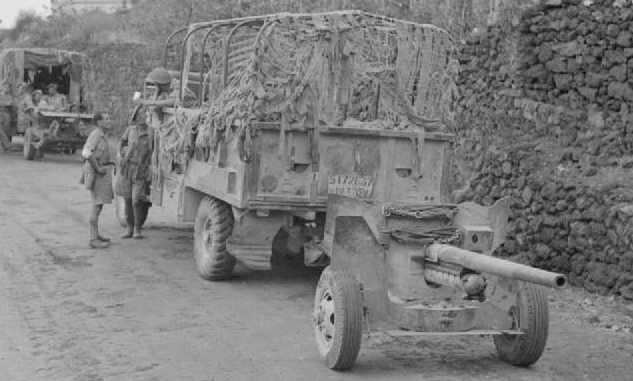
| Year | September 1941 (Mk. II) February 1943 (Mk. IV) |
| Weapon Type | Medium Anti-Tank Gun |
| Origin & Designer | Britain/Various |
| Numbers Produced | 35.000 (Total Production) |
| Crew | 6 |
| Calibre | 57mm (57x441R) |
| Elevation | -5° to +15° |
| Traverse | 45° Left & Right |
| Breech | Vertical Sliding Block |
| Recoil | Hydrospring |
| Gun Sight | No.22c |
| Gun Mount | [@gun_mounts] |
| Carriage | Split Trail |
| Trailers | [@trailers] |
| Gun Shield | 6.35mm |
| Armoured Plate | [@armoured_plate] |
| Barrel Length | 4.440mm L/43 (Mk. II) 2.855mm L/50 (Mk. IV) |
| Overall Length | 4.72m (Mk. II) 4.76m (Mk. IV) |
| Width | 1.80m |
| Height | 1.27m |
| Weight | Weight in Traction: 1.143 kg (Mk. II) 1.165 kg (Mk. IV) Weight in Action: 1.110 kg (Mk. II) 1.133 kg (Mk. IV) |
| Round Weight | 2.86 kg |
| Muzzle Velocity | 821 m/s (Mk. II) 884 m/s (Mk. IV) |
| Feed | [@feed] |
| Magazine Capacity | [@magazine_capacity] |
| Practical Rate of Fire | [@practical_rate_of_fire] |
| Rate of Fire | 15 r.p.m. |
| Maximum Rate of Fire | [@maximum_rate_of_fire] |
| Maximum Ceiling | [@maximum_ceiling] |
| Maximum Ground Range | [@maximum_ground_range] |
| Maximum Range | 5.030m |
| Armour Penetration | Mk. II: 76mm @ 500m @ 30°. 65mm @ 1000m @ 30°. Mk. IV: 78mm @ 500m @ 30°. 57mm @ 1000m @ 30°. |
| Traction | Motorised (Lloyd & Universal Carrier) and Portee |
| Variants | [@variants] |
| Notes | The 6 pdr made its debut in the western desert in 1942 and gradually replace the obsolete 2 pdr, it proved itself against the German Mk. IIIs and Mk. IVs but was found wanting against the heavier Panthers and Tigers, it was never fully replaced by the more powerful 17 pdr and went on to serve in Infantry Divisions well after WW2. |